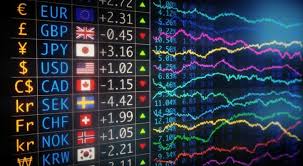
A Comprehensive Guide to Trading Forex in TradingView
Trading Forex has become increasingly popular among retail traders, and platforms like TradingView have revolutionized how we analyze the market. With its advanced charting tools, social trading features, and user-friendly interface,
trading forex in tradingview Trading Platform HK offers a great opportunity for traders at all levels to dive into the Forex markets.
Understanding Forex Trading
Forex, or foreign exchange, is the global marketplace for trading national currencies against one another. It’s the largest and most liquid market in the world, where traders can engage in buying, selling, and exchanging currencies.
The Forex market operates 24 hours a day, five days a week, making it accessible anytime.
Why Choose TradingView for Forex Trading?
TradingView stands out for its powerful analytical tools and vibrant community. Here are some reasons why it is a preferred choice for Forex traders:
- Intuitive Interface: TradingView’s interface is designed to be user-friendly, making it easy to navigate charts and analysis tools.
- Advanced Charting Tools: With various chart types, time frames, and a wealth of technical indicators, traders can conduct in-depth market analysis.
- Social Networking: Traders can share ideas, charts, and strategies and follow experienced traders’ insights.
- Custom Alerts: Setting up alerts for price movements or technical indicators helps traders stay informed without constant monitoring.
- Real-Time Data: Access to live market data ensures traders can make timely decisions.
Getting Started with TradingView
To start trading Forex on TradingView, follow these steps:
- Create an Account: Sign up for a TradingView account. You can start with a free account that gives you access to basic features, or opt for a paid version for additional features.
- Navigate the Platform: Familiarize yourself with the dashboard. Explore the various sections, including charts, market data, and user-generated ideas.
- Set Up Charts: Start by selecting the currency pairs you wish to trade. Utilize the charting tools to analyze price movements and trends.
- Use Technical Indicators: Apply technical indicators such as Moving Averages, RSI, and MACD to enhance your analysis.
Analyzing Currency Pairs
In Forex trading, currency pairs are categorized into three main types: major pairs, minor pairs, and exotic pairs.
Understanding these categories is crucial for effective trading:
- Major Pairs: These involve the most traded currencies, such as EUR/USD, USD/JPY, and GBP/USD. They are known for their liquidity and lower spreads.
- Minor Pairs: These are less traded, such as EUR/GBP and AUD/NZD. They often have wider spreads compared to major pairs.
- Exotic Pairs: These consist of a major currency paired with a currency from a developing market, like USD/TRY or EUR/SEK. They can be more volatile and are generally less liquid.
Implementing Trading Strategies

Successful Forex trading relies on the implementation of sound trading strategies. Here are a few popular strategies that traders employ using TradingView:
1. Day Trading
Day trading involves making multiple trades throughout the day, capitalizing on small price movements. Traders often use short time frames such as 1-minute or 5-minute charts.
2. Swing Trading
Swing trading aims to capture price swings over a few days or weeks. Traders look for a larger price movement and utilize technical analysis to identify entry and exit points.
3. Position Trading
Position trading is a longer-term strategy where traders hold onto their positions for weeks or months, focusing on the overall direction of currency pairs rather than short-term price fluctuations.
Risk Management in Forex Trading
Effective risk management is vital for longevity in Forex trading. Here are some key principles to keep in mind:
- Set Stop-Loss Levels: Always implement stop-loss orders to limit potential losses on trades.
- Use Proper Position Sizing: Determine how much of your trading capital you are willing to risk on each trade to manage overall exposure effectively.
- Diversify Your Portfolio: Avoid putting all your capital into a single trade or currency pair. Diversifying reduces risk exposure.
Learning and Evolving as a Trader
The Forex market is constantly evolving, and it’s crucial for traders to stay updated on market trends and economic indicators. Use TradingView’s community features to learn from others, share experiences, and refine your trading skills.
Engaging with forums and webinars can also provide valuable insights into different trading styles and strategies.
Conclusion
Trading Forex on TradingView offers an extensive suite of tools and resources for traders of all levels. From understanding the basics of Forex trading to implementing advanced strategies and risk management techniques,
this platform equips traders to navigate the dynamic Forex landscape. Remember that patience, continuous learning, and disciplined risk management are key components of successful trading.
With TradingView, you have everything you need to take your trading skills to the next level. Happy trading!
